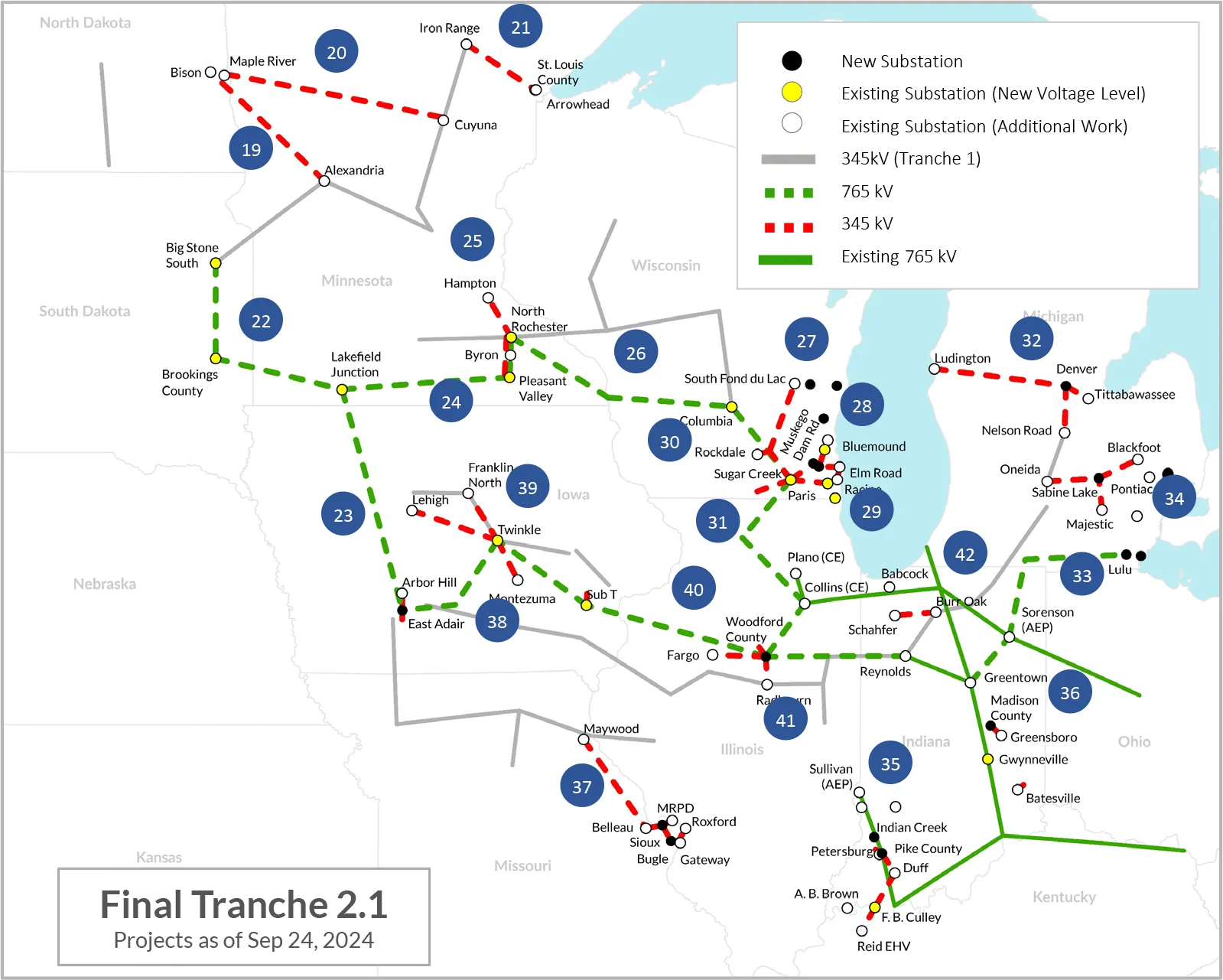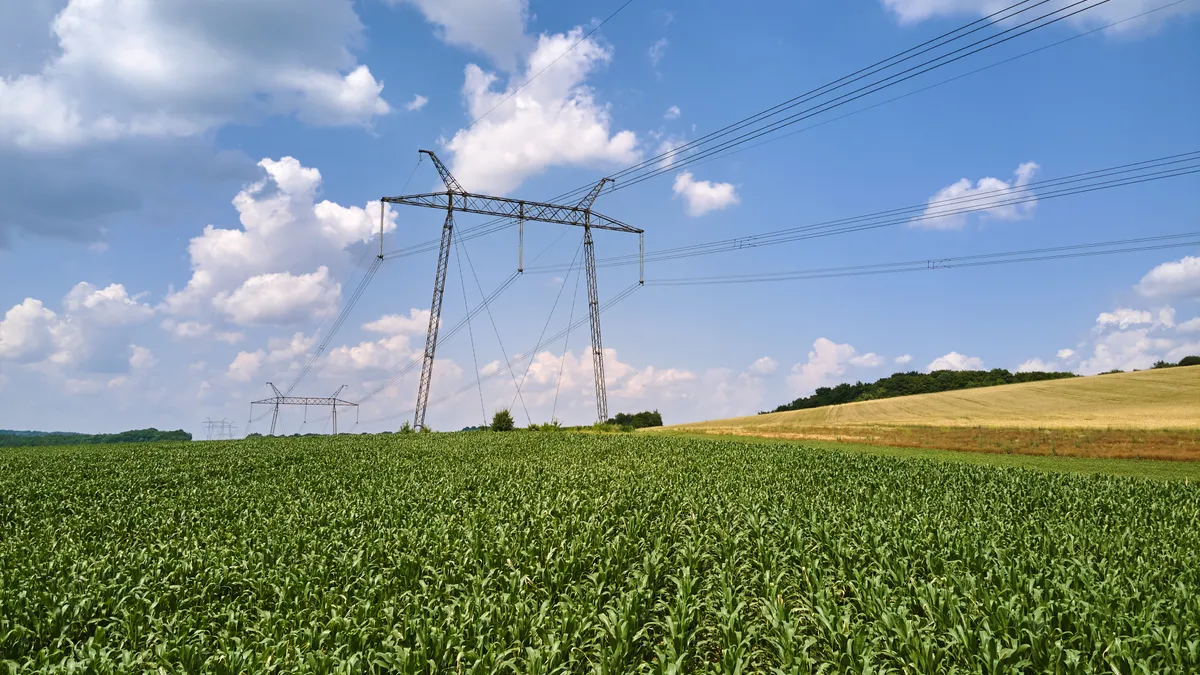The Midcontinent Independent System Operator is advancing a $21.8 billion regional transmission expansion plan that would create a 765-kV backbone across its Midwest region, according to a final draft portfolio reviewed by stakeholders this week during a two-day workshop.
The Long Range Transmission Planning, or LRTP, Tranche 2 plan represents “least regrets solutions” to ensure reliable and efficient energy delivery to MISO’s Midwest customers, the grid operator said in a benefits analysis that was discussed Wednesday.
The draft portfolio is designed to handle what the grid operator expects its system will look like in 2042 under a scenario called Future 2A, according to a presentation to the LRTP workshop. The scenario is based on utility resource plans and state energy goals.
It refines a plan first floated in March and paves the way for a review by MISO committees this fall and an expected board vote in mid-December. It will be part of MISO’s 2024 Transmission Expansion Plan, which includes local, regional and interregional projects.
If approved, MISO expects the regional projects would come online from 2032 through 2034.

The Clean Grid Alliance, a trade group for renewable energy developers, supports MISO’s draft portfolio, according to Beth Soholt, the group’s executive director and a MISO Advisory Committee member.
“In addition to facilitating resource expansion by nearly 120 GW, Tranche 2.1 will unlock significant economic and reliability grid benefits for electric customers throughout the MISO Midwest states and in neighboring systems,” Soholt said in an email Thursday.
The Eastern Interconnection needs to become more interconnected so power can flow longer distances during severe weather events and to maximize energy market efficiency across seams between grid operators, according to Soholt.
“Not only will more transmission help tap new, economic resources, but result in electricity bills that are more reasonable than if we had a balkanized energy grid,” Soholt said. “We can’t get Tranche 2.1 into service quickly enough!”
The portfolio of transmission projects across MISO’s northern region builds on its roughly $10.3 billion Tranche 1 plan, approved by the grid operator’s board in mid-2022, as well as the $1.7 billion Joint Targeted Interconnection Queue projects along MISO’s seam with the Southwest Power Pool. Tariff changes needed to implement the JTIQ proposal are under review at the Federal Energy Regulatory Commission.
MISO expects the draft portfolio would produce net benefits of $23.1 billion over 20 years and $83.2 billion over 40 years across its Midwest region.
The planned transmission portfolio, for example, would produce $16.3 billion in savings from avoided capacity costs over 20 years by providing expanded access to generation across MISO’s Midwest footprint, according to the grid operator’s estimate. It would also produce $14.8 billion in benefits by reducing potential power outages over 20 years, MISO estimated.
All of MISO’s seven Midwest zones would see net benefits from the transmission projects, with Zone 2 covering eastern Wisconsin and Michigan’s Upper Peninsula seeing the greatest net benefits of 2.8 to 5.5 times the projects’ costs over 20 years, according to the grid operator.
Some projects in the planned transmission portfolio would be eligible for competitive bidding, which the grid operator expects would start early next year. MISO plans to propose enhancements to its bidding process this month for review by FERC. The proposal will aim to make the process more efficient, flexible and “better aligned with the interests of process participants,” MISO said in a Wednesday presentation.















